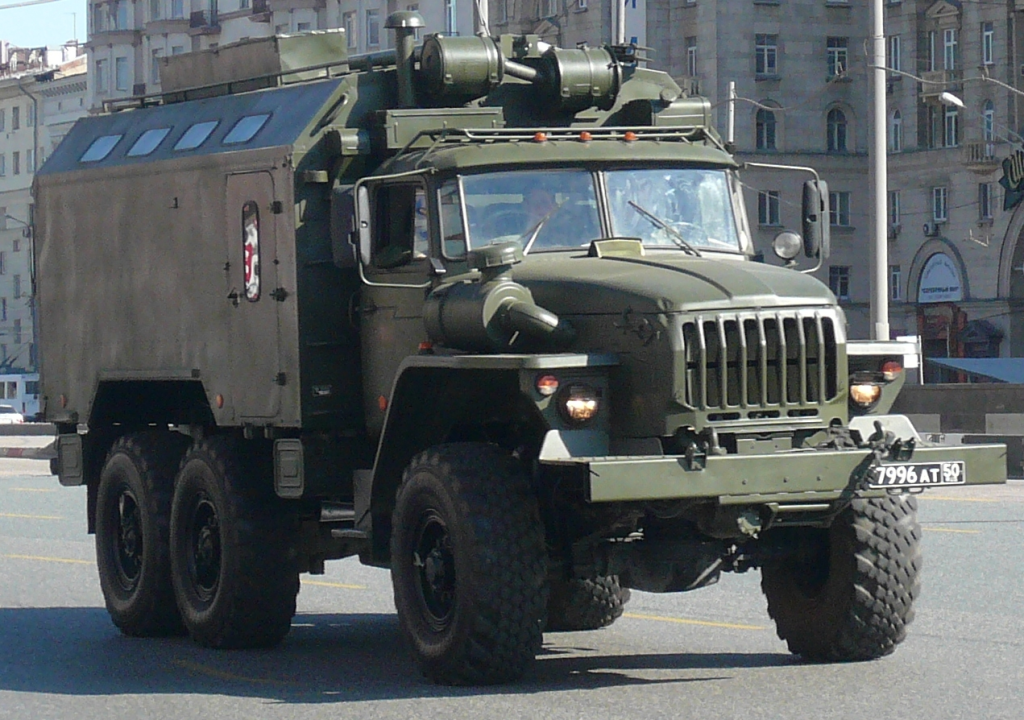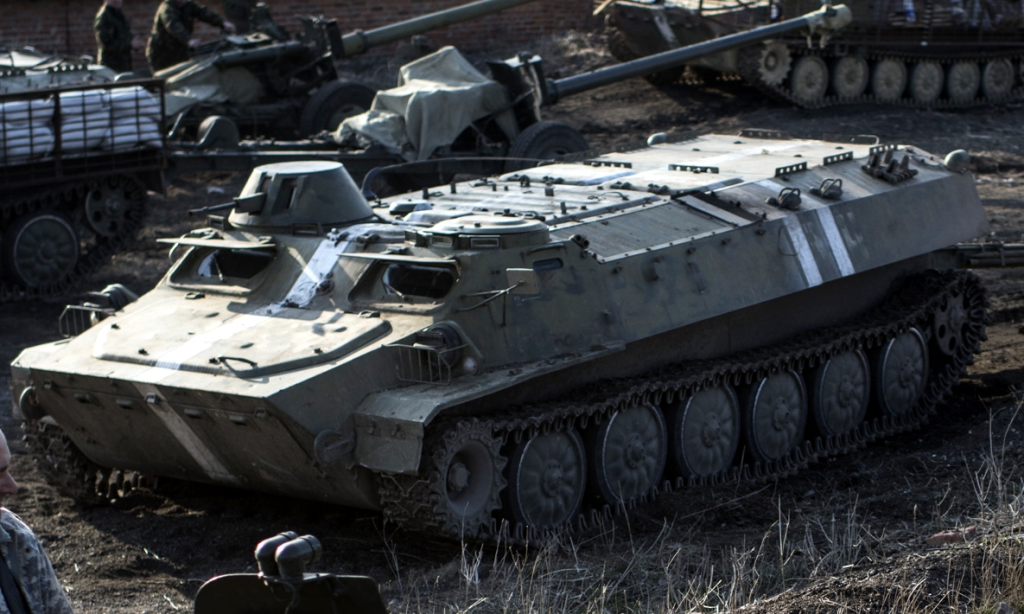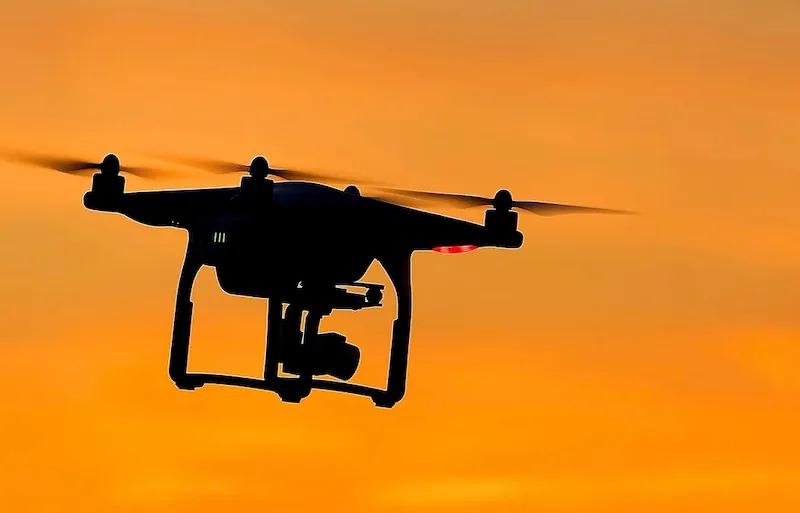
“Speed kills” is more than just a war cliche it’s the nature of contemporary combat. In southern Ukraine, that speed was not in shells or missile barrages, but in agile, first-person perspective drones that stalked and destroyed Russian armor before it could move forward.
The recent destruction of three Russian armored vehicles by Ukraine’s 412th ‘Nemesis’ Regiment highlights a deep evolution in land warfare. What was once the prerogative of heavy artillery and tank battles is now contested by small, accurate, and psychologically shattering aerial systems. The incident, which was caught on dramatic onboard footage, provides an insight into how drones are redefining the rules of engagement.
From Ukrainian operators’ tactical brilliance to the countermeasures being crafted in Moscow, this incident presents the changing dynamics between offense, defense, and the human factor of war. These are seven important takeaways that mark this new chapter in the war.

1. The Precision Ambush by the Asgard Unit
Operating within the 412th ‘Nemesis’ Regiment, Asgard, Ukraine’s drone unit spotted a Russian column of a tank, an armored fighting vehicle, and an MT-LB. In first-person view attack drones, they closed on the enemy before it could move to respond. Surprise proved decisive videos depicted the vehicles stopped in open fields, exposed to repeated attacks.
Though camouflage and cage armor made precise identification difficult, the attack proved how inexpensive and small systems can disable highly defended assets. The engagement was both a tactical success and a demonstration of concept for integrating drone reconnaissance and strike in near-real time.

2. Onboard Footage as a Tactical Asset
The released video was propaganda, but it was more than propaganda. Defense Express observed that the recordings are useful training material, which enables the operators to hone targeting tactics and learn to compensate for enemy countermeasures. Trainers can break down every maneuver, from approach vector to detonation timing, to optimize future missions.
This routine reflects how air forces have long employed gun camera imagery for pilot training. In the case of Ukraine, democratization of air combat via drones implies that even small infantry units can enjoy visual after-action reviews.

3. Drones as ‘Pocket Artillery’
Defense Express referred to the Asgard attack as a case of drones becoming “pocket artillery for infantry units”. In practice, such systems condense the kill chain so that front-line forces can deliver precision strikes without waiting for traditional artillery support.
This trend is mirrored by the U.S. Army’s development of precision-guided rounds such as the Excalibur round, which has a CEP of only 4 meters. Both tend toward a world where lethality is dispersed across smaller, more mobile platforms with the advantage of decreased logistical footprints for traditional fire support.

4. The Psychological Toll of Drone Warfare
As described by Dr. Ronald Hirschberg of Harvard’s HomeBase program, the shrill whine of FPV drones provokes “profound and, at times, near-disabling dread” in soldiers. In Ukraine, more than 60% of battlefield wounds are caused by drones, and their constant hover requires movement, concealment, and even morale changes.
The Asgard attack illustrates this psychological aspect. Aside from physical damage, the fact that undetectable operators can monitor and attack at their choosing forces opponents to pour resources into countermeasures and changes the pace of operations.

5. Russia’s Soldier-Worn Counter-Drone Jammer
Moscow is testing a small, soldier-borne electronic warfare system that attacks drone video streams instead of control signals. By depriving the operator of vision without engaging failsafe protocols, the system is intended to disorient attackers while saving energy and avoiding detection.
This strategy, outlined in a new analysis, marks a move toward precision jamming against brute-force disruption. That said, it doesn’t work against fiber-optic drones and will need constant updating as Ukrainian systems develop.

6. The Stalemate of Mutual Drone Dominance
Both sides now incorporate drones extensively into both offensive and defensive strategies, especially in urban and semi-urban warfare. This mutual ability to observe and strike has produced a kind of stalemate any major movement is liable to be immediately detected and attacked.
Shattering this stalemate will most probably depend on advances in counter-drone technology or tactics. Should Russia’s new jammer work, it might create thin windows of opportunity to maneuver in contested areas such as Chasiv Yar or around Kupyansk.

7. Lessons for Future Artillery Doctrine
The Asgard exercise highlights lessons that resonate with arguments within Western militaries about substituting massed, indiscriminate artillery with precision, deployable fires. In the U.S., proponents believe that Excalibur-type precision systems can achieve the same result with fewer rounds, guns, and personnel putting less strain on logistics and accelerating operations.

Ukraine’s integration of drones as organic strike capabilities follows the same logic. Whether via guided rounds or armed quadcopters, the focus is becoming less on putting ammunition downrange and more on applying decisive effects before the enemy can respond.

The destruction of three armored vehicles in southern Ukraine was a small tactical incident in a huge and grinding war. But it captured the essence of the key dynamics of contemporary ground warfare: the integration of precision, velocity, and psychological effect; the competition between offensive innovation and defensive improvisation; and the incremental blurring of old lines between infantry, artillery, and air power. As both sides learn to get better with their tools and techniques, the battlefield will just keep changing benefiting those who can look first, shoot quick, and improvise quicker.


